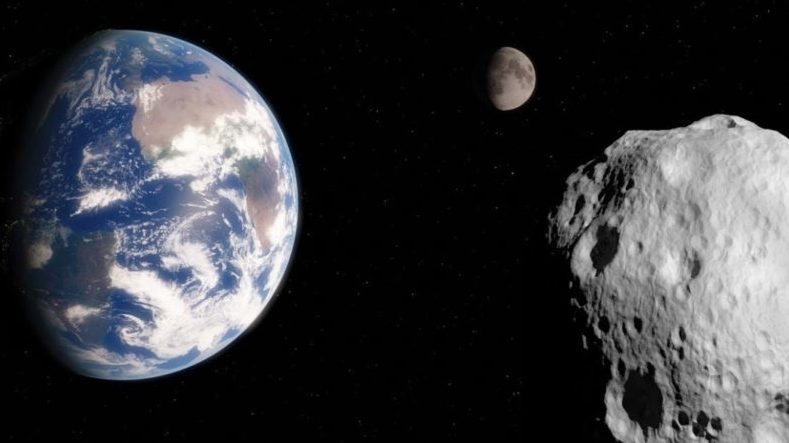When asked the question of how many moons that Earth has, the question seems like a no-brainer. Of course, there’s only one moon — or maybe not. In 2016, it was actually discovered that we have another moon in orbit around the Earth.
This quasi moon known as Kamo’oalewa is named after the Hawaiian word referring to a moving celestial object. Kamo’oalewa was discovered five years ago by the University of Hawaii Institute for Astronomy. Scientists utilized the Panoramic Survey Telescope and Rapid Response System (Pan-STARRS) at Haleakala Observatory, which is a high powered telescope that has discovered many satellites, including over half of comets found since 2014.
The quasi moon is far from the Moon that we are used to seeing in the sky each night. It measures less than 164 feet across, while in comparison the Moon is over 2,159 miles across. Kamo’oalewa also has a strange orbit, in which it gets no closer than 40 to 100 times the 384,000 km distance of the Moon to the Earth. The flight path is caused by the competing gravitational pulls of the Earth and the sun, bending its orbit.
“It’s primarily influenced just by the sun’s gravity, but this pattern shows up because it’s also — but not quite — on an Earth-like orbit. So it’s this sort of odd dance,” says graduate student Ben Sharkey of the Lunar and Planetary Laboratory at the University of Arizona.
Sharkey is the lead author of a recent study published in the science journal Nature, in which they propose the origin of Kamo’oalewa, which has been a mystery to scientists for years.
This doesn’t mean the origin of the moon has to be exotic, though. The multitude of asteroids that are within the solar system can get caught by the pull of planets and become fragmentary moons. Sometimes, asteroids don’t orbit planets conventionally but travel in front of or behind them while orbiting the sun, such as the Trojan asteroids that trail Jupiter.
However, Kamo’oalewa’s mysterious composition made it a unique case. While most asteroids reflect brightly in certain infrared frequencies, Kamo’oalewa looks much dimmer. This suggested to scientists that it had a different composition than most asteroids, therefore meaning a different origin than other quazi moons.
Sharkey, along with his PhD advisers, decided to explore where in the universe this quasi moon came from. They employed several telescopes, but the results were nonetheless inconclusive, as the moon’s composition and infrared signature puzzlingly looked unlike other asteroids.
This was until Sharkey turned to data from our own famous Moon. He looked at a paper published by one of his advisers on lunar samples from the Apollo 14 mission, and found that the data from moon rocks and the data from his telescopes were a perfect match. Kamo’oalewa’s infrared signature paralleled the behavior of lunar silicates on the surface of the moon exactly.
“Visually, what you’re seeing is weathered silicate,” said Sharkey. “The eons of exposure to space environment and to micrometeorite impacts, it’s almost like a fingerprint and it’s hard to miss.”
The fact that Kamo’oalewa is a fragment of the Moon makes sense, especially when looking at the many craters that dot the surface of the Moon. The Moon is constantly battered by lunar objects causing debris to be ejected into space, with Kamo’oalewa being one of them. Instead of flying through space or landing on Earth as a meteorite, though, Kamo’oalewa became a whole new quasi moon orbiting Earth.
Even though the human race is just getting to know Kamo’oalewa, sadly, it won’t be sticking around with us for much longer. Due to its unstable flight path, scientists estimate that our little moon will stay for only 300 more years, before breaking free of the gravitational pull of the Earth and Sun, and then flying through space for the rest of its long life.
